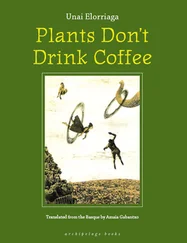Physiology of Salt Stress in Plants
Здесь есть возможность читать онлайн «Physiology of Salt Stress in Plants» — ознакомительный отрывок электронной книги совершенно бесплатно, а после прочтения отрывка купить полную версию. В некоторых случаях можно слушать аудио, скачать через торрент в формате fb2 и присутствует краткое содержание. Жанр: unrecognised, на английском языке. Описание произведения, (предисловие) а так же отзывы посетителей доступны на портале библиотеки ЛибКат.
- Название:Physiology of Salt Stress in Plants
- Автор:
- Жанр:
- Год:неизвестен
- ISBN:нет данных
- Рейтинг книги:4 / 5. Голосов: 1
-
Избранное:Добавить в избранное
- Отзывы:
-
Ваша оценка:
- 80
- 1
- 2
- 3
- 4
- 5
Physiology of Salt Stress in Plants: краткое содержание, описание и аннотация
Предлагаем к чтению аннотацию, описание, краткое содержание или предисловие (зависит от того, что написал сам автор книги «Physiology of Salt Stress in Plants»). Если вы не нашли необходимую информацию о книге — напишите в комментариях, мы постараемся отыскать её.
Discover how soil salinity affects plants and other organisms and the techniques used to remedy the issue Physiology of Salt Stress in Plants,
Physiology of Salt Stress in Plants
Physiology of Salt Stress in Plants
Physiology of Salt Stress in Plants — читать онлайн ознакомительный отрывок
Ниже представлен текст книги, разбитый по страницам. Система сохранения места последней прочитанной страницы, позволяет с удобством читать онлайн бесплатно книгу «Physiology of Salt Stress in Plants», без необходимости каждый раз заново искать на чём Вы остановились. Поставьте закладку, и сможете в любой момент перейти на страницу, на которой закончили чтение.
Интервал:
Закладка:
6 Chapter 8Figure 8.1 Adverse effect of salinity on plant growth.Figure 8.2 Terrestrial water cycle and its components.Figure 8.3 Illustration of global carbon cycle.Figure 8.4 Showing different stages of nitrogen cycle.Figure 8.5 Illustration of cyclic oxygen cycle.Figure 8.6 Processes and different stages of phosphorus cycle.Figure 8.7 The diagram is indicative of the oxidation and reduction that bri...Figure 8.8 Illustration of cyclic calcium cycle in terrestrial ecosystem.
7 Chapter 9Figure 9.1 Reactive oxygen species (ROS) formed under high salt concentratio...Figure 9.2 Flow diagram showing major antioxidant system (enzymatic and none...Figure 9.3 Flow diagram showing SOS pathway for mitigation of high salt conc...
8 Chapter 10Figure 10.1 Schematic representation of biosynthesis of osmolytes in plants ...Figure 10.2 Schematic representation of toxicity and tolerance response unde...Figure 10.3 A pictorial presentation of osmolyte synthesis and mediated resp...
9 Chapter 11Figure 11.1 Pictorial representation of the types of salinity stress and its...
10 Chapter 12Figure 12.1 Schematic diagram representing the functional strategy of plant/...Figure 12.2 Diagrammatic representation of the role of several extracellular...
Guide
1 Cover Page
2 Title Page
3 Copyright Page
4 List of Contributors
5 Preface
6 Table of Contents
7 Begin Reading
8 Index
9 Wiley End User License Agreement
Pages
1 iii
2 iv
3 xii
4 xiii
5 xiv
6 xv
7 xvi
8 1
9 2
10 3
11 4
12 5
13 6
14 7
15 8
16 9
17 10
18 11
19 12
20 13
21 14
22 15
23 16
24 17
25 18
26 19
27 20
28 21
29 22
30 23
31 24
32 25
33 26
34 27
35 28
36 29
37 30
38 31
39 32
40 33
41 34
42 35
43 36
44 37
45 38
46 39
47 40
48 41
49 42
50 43
51 44
52 45
53 46
54 47
55 48
56 49
57 50
58 51
59 52
60 53
61 54
62 55
63 56
64 57
65 58
66 59
67 60
68 61
69 62
70 63
71 64
72 65
73 66
74 67
75 68
76 69
77 70
78 71
79 72
80 73
81 74
82 75
83 76
84 77
85 78
86 79
87 80
88 81
89 82
90 83
91 84
92 85
93 86
94 87
95 88
96 89
97 90
98 91
99 92
100 93
101 94
102 95
103 96
104 97
105 98
106 99
107 100
108 101
109 102
110 103
111 104
112 105
113 106
114 107
115 108
116 109
117 110
118 111
119 112
120 113
121 114
122 115
123 116
124 117
125 118
126 119
127 120
128 121
129 122
130 123
131 124
132 125
133 126
134 127
135 128
136 129
137 130
138 131
139 132
140 133
141 134
142 135
143 136
144 137
145 138
146 139
147 140
148 141
149 142
150 143
151 144
152 145
153 146
154 147
155 148
156 149
157 150
158 151
159 152
160 153
161 154
162 155
163 156
164 157
165 158
166 159
167 160
168 161
169 162
170 163
171 164
172 165
173 166
174 167
175 168
176 169
177 170
178 171
179 172
180 173
181 174
182 175
183 176
184 177
185 178
186 179
187 180
188 181
189 182
190 183
191 184
192 185
193 186
194 187
195 188
196 189
197 190
198 191
199 192
200 193
201 194
202 195
203 196
204 197
205 198
206 199
207 200
208 201
209 202
210 203
211 204
212 208
213 209
214 210
215 211
216 212
217 213
218 214
219 215
220 216
221 217
222 218
223 219
224 220
225 221
226 222
227 223
228 224
229 225
230 226
231 227
232 228
233 231
234 232
235 233
236 234
237 235
238 236
239 237
240 238
241 239
242 240
243 241
244 242
245 243
246 244
247 245
248 246
249 247
250 248
251 249
252 250
253 251
254 252
255 253
256 254
257 255
258 256
259 257
Physiology of Salt Stress in Plants
Perception, Signalling, Omics and Tolerance Mechanism
Edited by
Pratibha Singh
Ranjan Plant Physiology and Biochemistry Laboratory, Department of Botany University of Allahabad Prayagraj, Uttar Pradesh, India
Madhulika Singh
Centre of Advanced Studies in Botany Banaras Hindu University Varanasi, Uttar Pradesh, India
Rajiv Kumar Singh
Horticultural Scientist Krishi Vigyan Kendra, Sohaon Ballia, Uttar Pradesh, India
Sheo Mohan Prasad
Ranjan Plant Physiology and Biochemistry Laboratory, Department of Botany University of Allahabad Prayagraj, Uttar Pradesh, India

This edition first published 2022
© 2022 John Wiley & Sons Ltd
All rights reserved. No part of this publication may be reproduced, stored in a retrieval system, or transmitted, in any form or by any means, electronic, mechanical, photocopying, recording or otherwise, except as permitted by law. Advice on how to obtain permission to reuse material from this title is available at http://www.wiley.com/go/permissions.
The right of Pratibha Singh, Madhulika Singh, Rajiv Kumar Singh, and Sheo Mohan Prasad to be identified as the author(s) of the editorial material in this work has been asserted in accordance with law.
Registered Office(s) John Wiley & Sons, Inc., 111 River Street, Hoboken, NJ 07030, USA John Wiley & Sons Ltd, The Atrium, Southern Gate, Chichester, West Sussex, PO19 8SQ, UK
Editorial Office The Atrium, Southern Gate, Chichester, West Sussex, PO19 8SQ, UK
For details of our global editorial offices, customer services and more information about Wiley products, visit us at www.wiley.com.
Wiley also publishes its books in a variety of electronic formats and by print‐on‐demand. Some content that appears in standard print versions of this book may not be available in other formats.
Limit of Liability/Disclaimer of Warranty The contents of this work are intended to further general scientific research, understanding and discussion only and are not intended and should not be relied upon as recommending or promoting scientific method, diagnosis or treatment by physicians for any particular patient. In view of ongoing research, equipment modifications, changes in governmental regulations and the constant flow of information relating to the use of medicines, equipment and devices, the reader is urged to review and evaluate the information provided in the package insert or instructions for each medicine, equipment or device for, among other things, any changes in the instructions or indication of usage and for added warnings and precautions. While the publisher and authors have used their best efforts in preparing this work, they make no representations or warranties with respect to the accuracy or completeness of the contents of this work and specifically disclaim all warranties, including without limitation any implied warranties of merchantability or fitness for a particular purpose. No warranty may be created or extended by sales representatives, written sales materials or promotional statements for this work. The fact that an organization, website or product is referred to in this work as a citation and/or potential source of further information does not mean that the publisher and authors endorse the information or services the organization, website or product may provide or recommendations it may make. This work is sold with the understanding that the publisher is not engaged in rendering professional services. The advice and strategies contained herein may not be suitable for your situation. You should consult with a specialist where appropriate. Further, readers should be aware that websites listed in this work may have changed or disappeared between when this work was written and when it is read. Neither the publisher nor authors shall be liable for any loss of profit or any other commercial damages, including but not limited to special, incidental, consequential or other damages.
Читать дальшеИнтервал:
Закладка:
Похожие книги на «Physiology of Salt Stress in Plants»
Представляем Вашему вниманию похожие книги на «Physiology of Salt Stress in Plants» списком для выбора. Мы отобрали схожую по названию и смыслу литературу в надежде предоставить читателям больше вариантов отыскать новые, интересные, ещё непрочитанные произведения.
Обсуждение, отзывы о книге «Physiology of Salt Stress in Plants» и просто собственные мнения читателей. Оставьте ваши комментарии, напишите, что Вы думаете о произведении, его смысле или главных героях. Укажите что конкретно понравилось, а что нет, и почему Вы так считаете.












